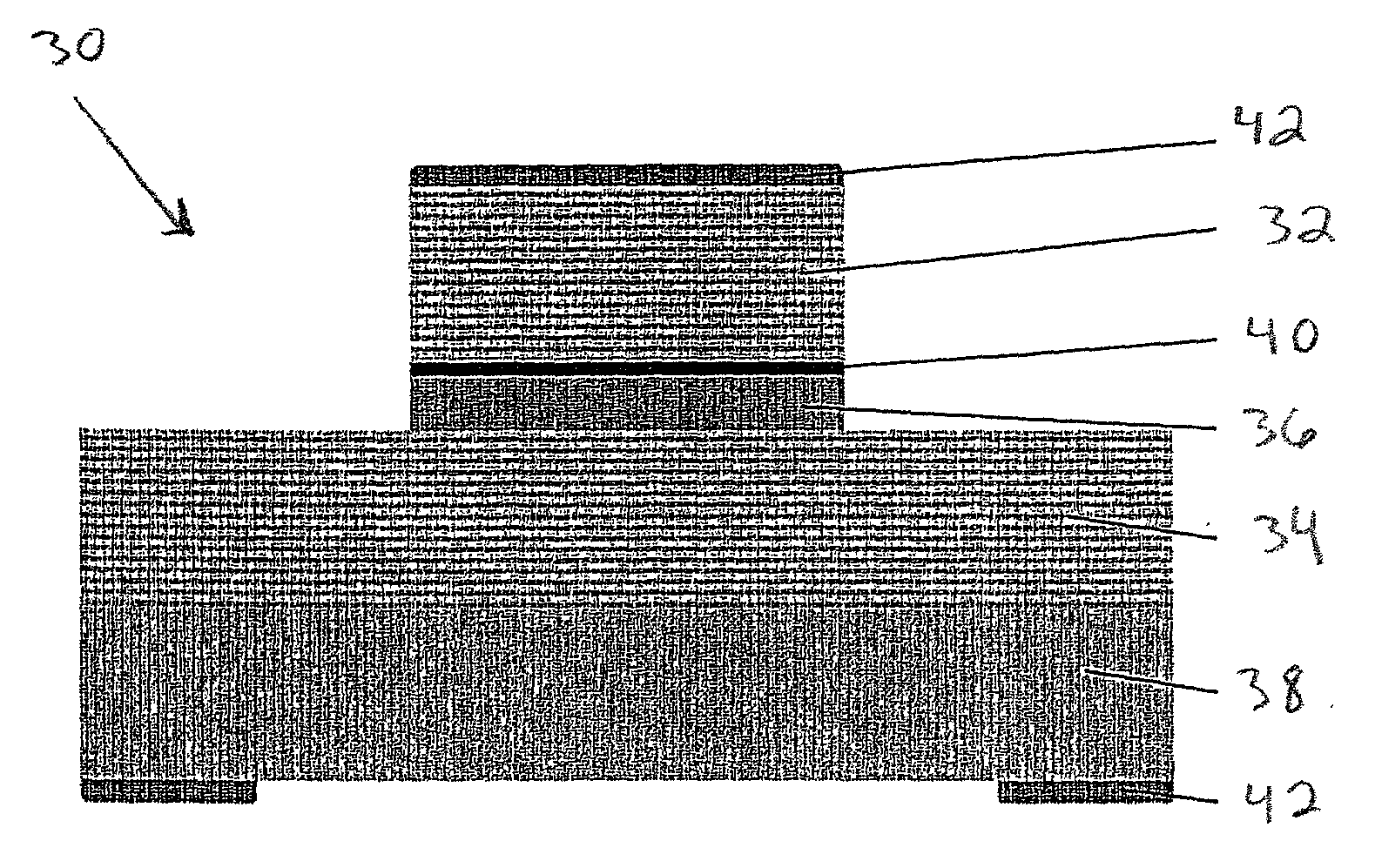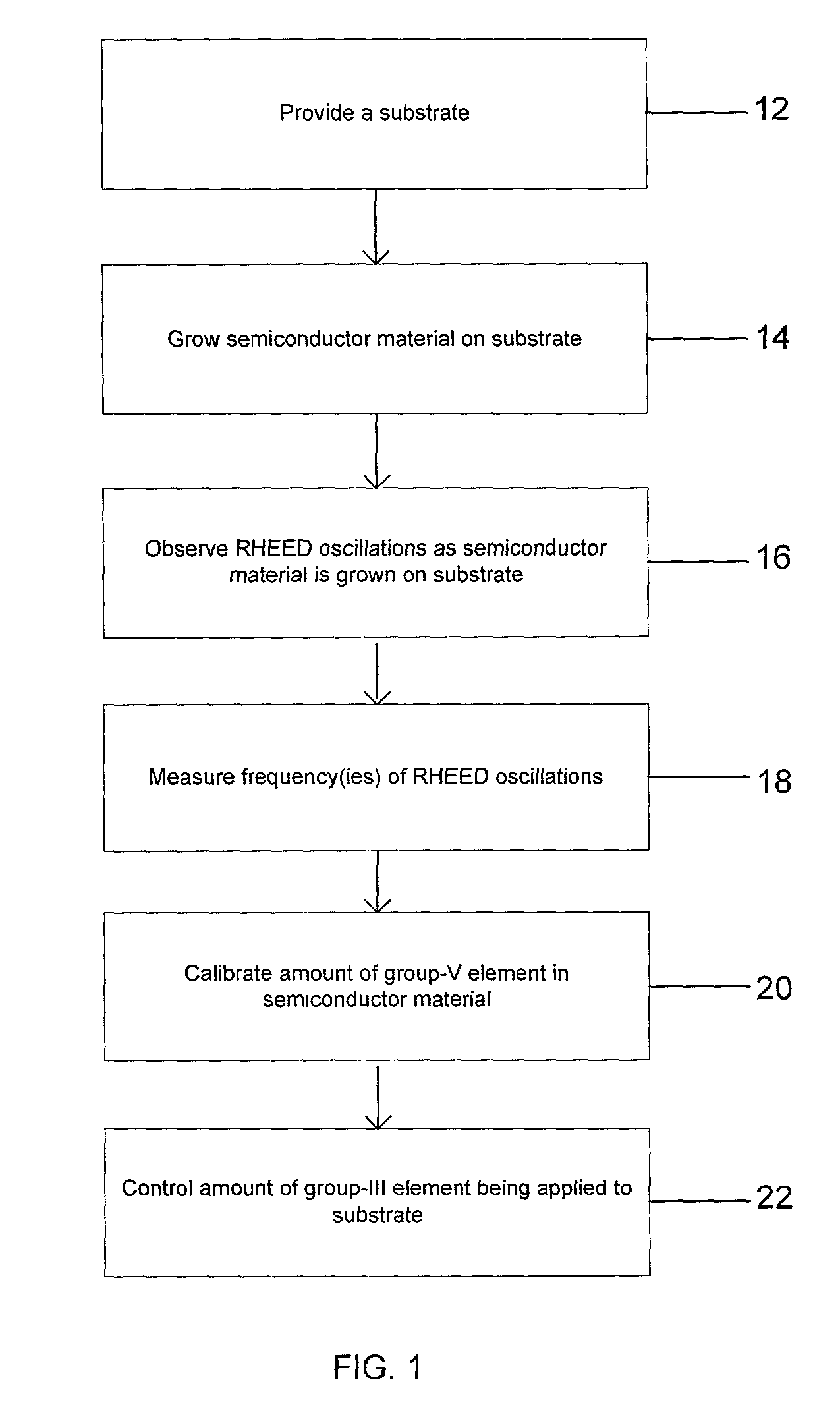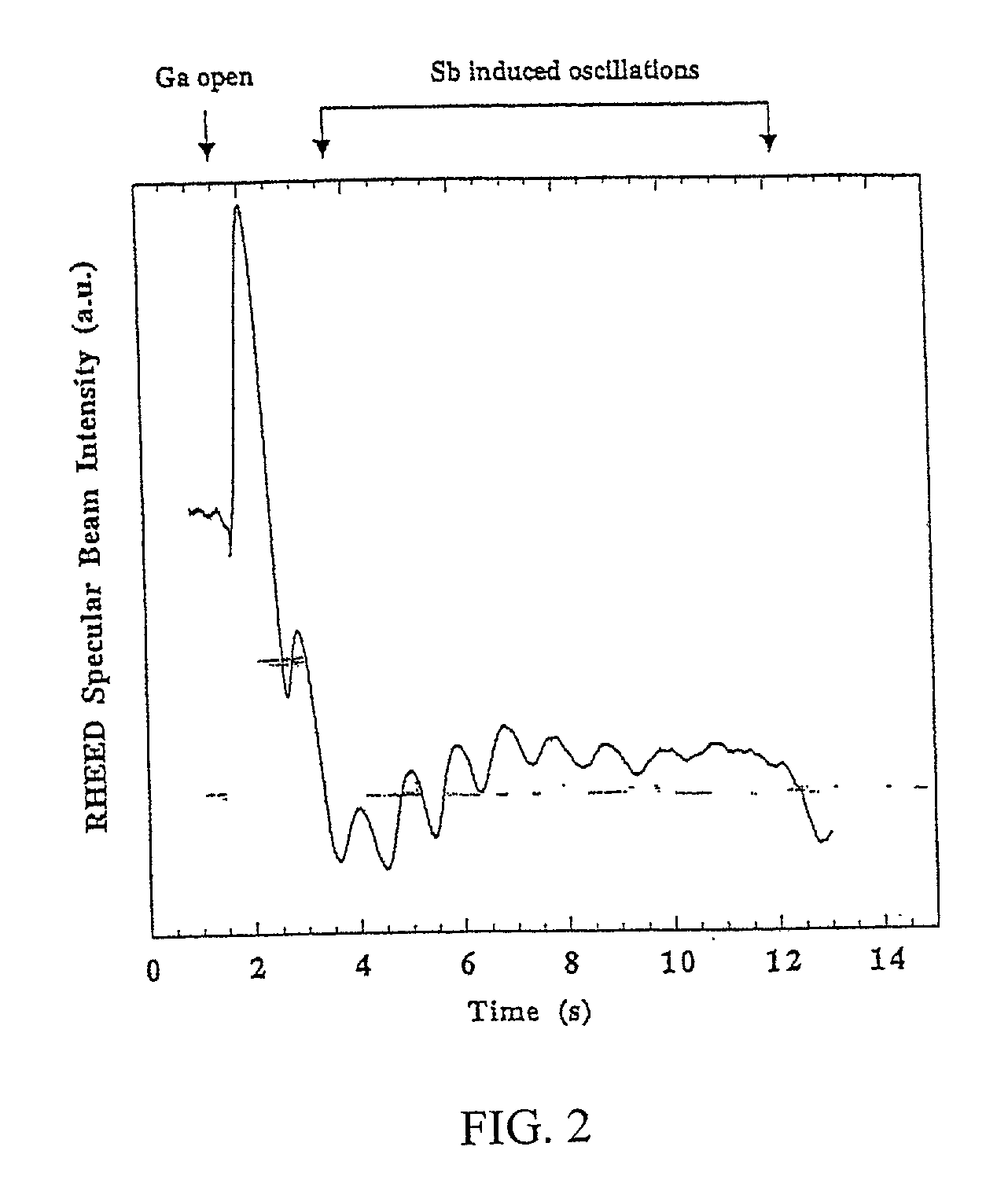Method of fabricating a distributed bragg reflector having enhanced thermal and electrical properties
a distributed bragg reflector and thermal and electrical properties technology, applied in the direction of lasers, optical resonator shape and construction, semiconductor lasers, etc., can solve the problems of telecommunications-important wavelength of 1.55 .mu.m., the accuracy and reproducibility of as is difficult to achieve in dbr fabrication, and the sb composition of algaassb semiconductor systems is difficult to achieve. , to achieve the effect of enhancing the thermal and reflectiv
- Summary
- Abstract
- Description
- Claims
- Application Information
AI Technical Summary
Benefits of technology
Problems solved by technology
Method used
Image
Examples
Embodiment Construction
[0031] FIG. 1 is a flowchart describing the process of growing a DBR in one embodiment. Block 12 shows the step of providing a substrate on which DBR materials are grown. Block 14 shows the step of growing semiconductor material on the substrate. As described herein, molecular beam epitaxy is used in this embodiment to grow the materials on the substrate. Block 16 shows the step of observing RHEED oscillations to monitor the composition of group V elements such as antimony (Sb) in the semiconductor material. The RHEED oscillations occur simultaneously as semiconductor material is being grown on the substrate. Growth continues as measurements are taken of the RHEED oscillations.
[0032] The RHEED oscillations are used to monitor the amount of a group V element's atoms being to the substrate. Block 18 shows the next step, in which measurements of the oscillation frequencies are taken and used to control the amounts of the group V elements incorporated into the semiconductor material. Ad...
PUM
| Property | Measurement | Unit |
|---|---|---|
| telecommunications-important wavelength | aaaaa | aaaaa |
| temperature | aaaaa | aaaaa |
| band-gap wavelength | aaaaa | aaaaa |
Abstract
Description
Claims
Application Information
 Login to View More
Login to View More - R&D
- Intellectual Property
- Life Sciences
- Materials
- Tech Scout
- Unparalleled Data Quality
- Higher Quality Content
- 60% Fewer Hallucinations
Browse by: Latest US Patents, China's latest patents, Technical Efficacy Thesaurus, Application Domain, Technology Topic, Popular Technical Reports.
© 2025 PatSnap. All rights reserved.Legal|Privacy policy|Modern Slavery Act Transparency Statement|Sitemap|About US| Contact US: help@patsnap.com



